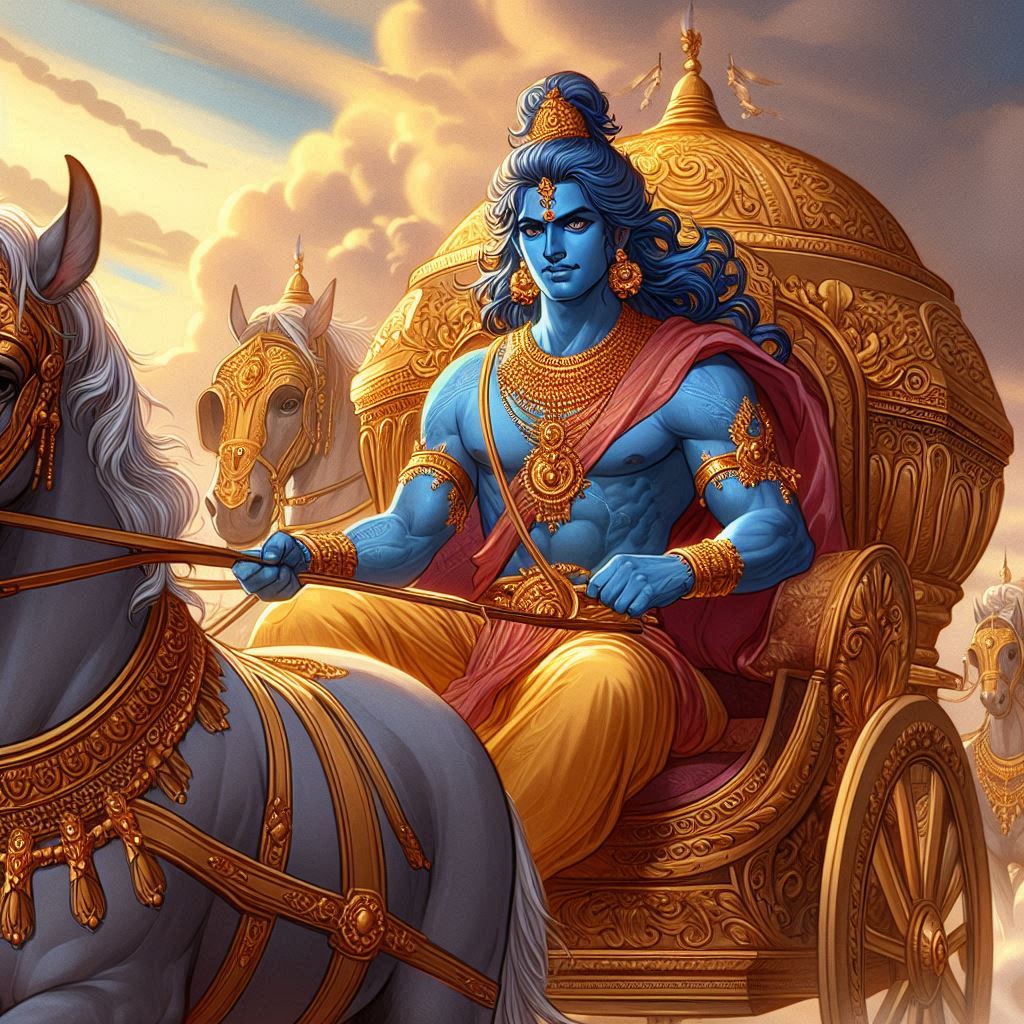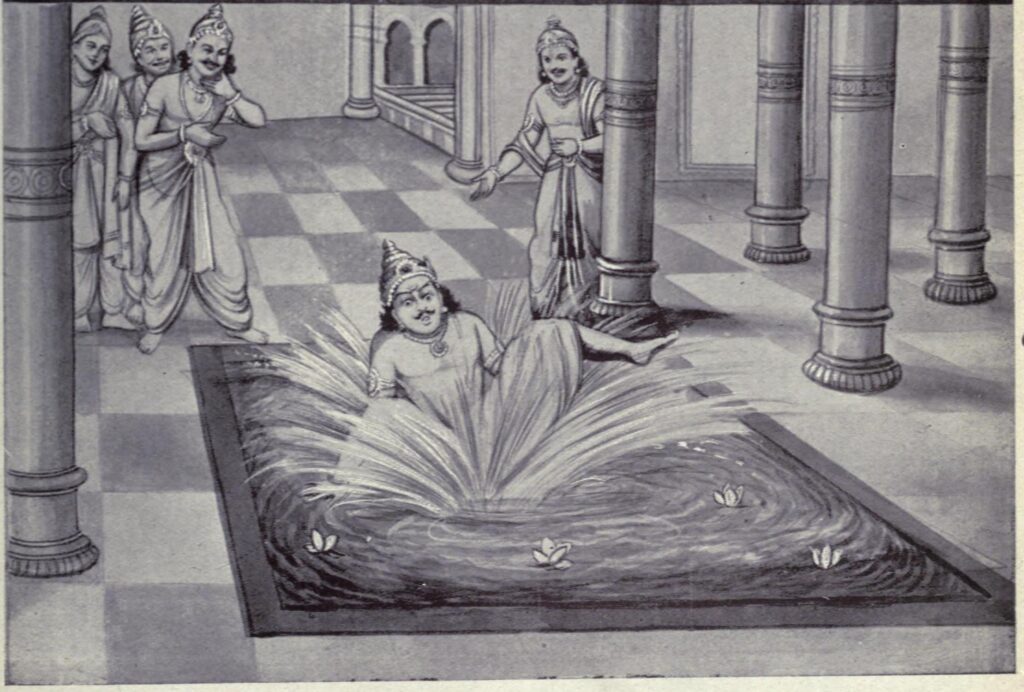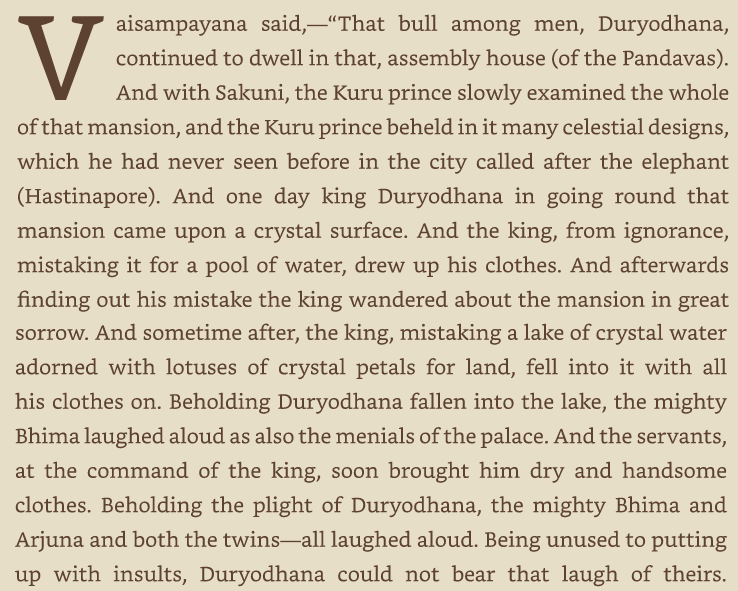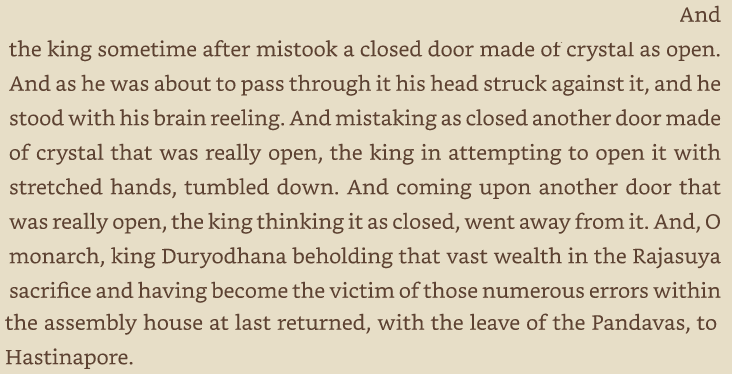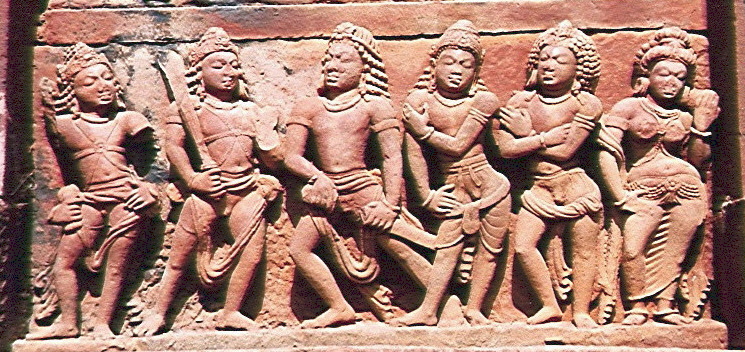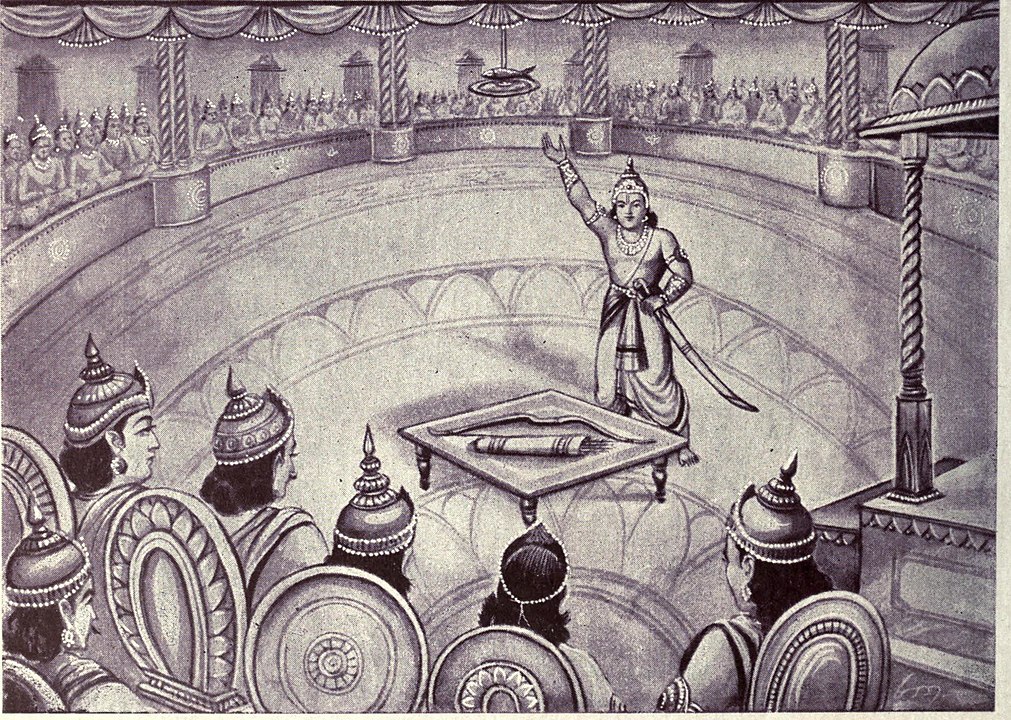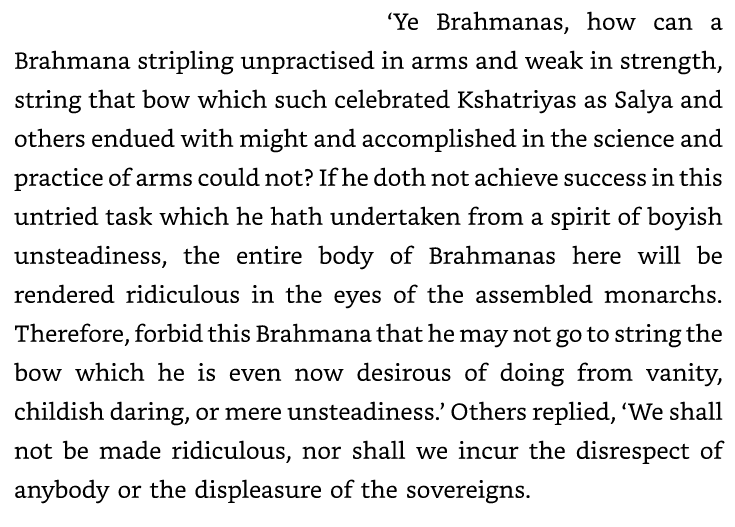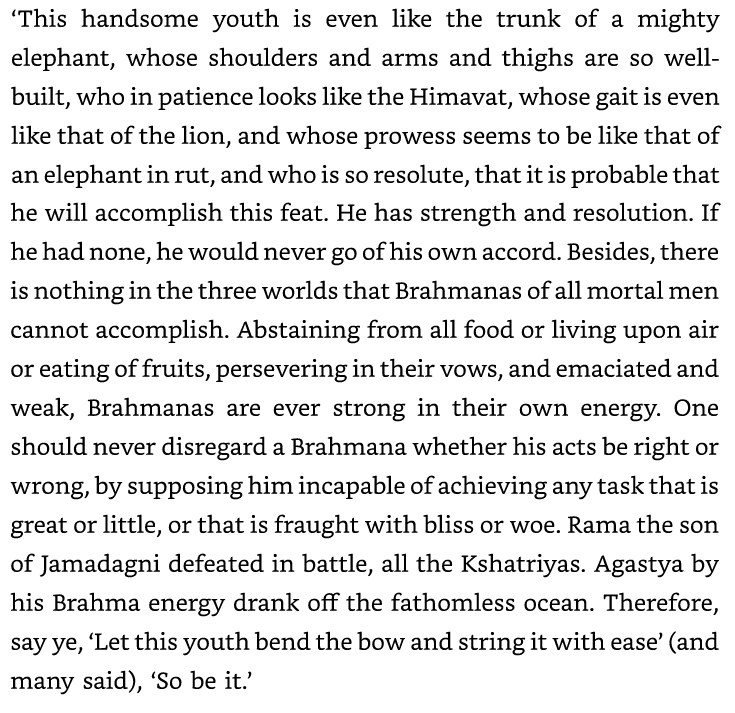When his Pandava brothers and Draupadi were on a pilgrimage, Arjuna was at Indra’s sabha, mastering the art of using celestial weapons, as well as learning music and dance from a gandharva. When his training was complete, Indra gifted the celestial missiles to Arjuna and asked for guru dakshina. He wanted Arjuna to kill the Nivatakavachas, a large group of danavas who converted a portion of an ocean into their domain. None of the gods could defeat them. Indra told Arjuna to finish the job.
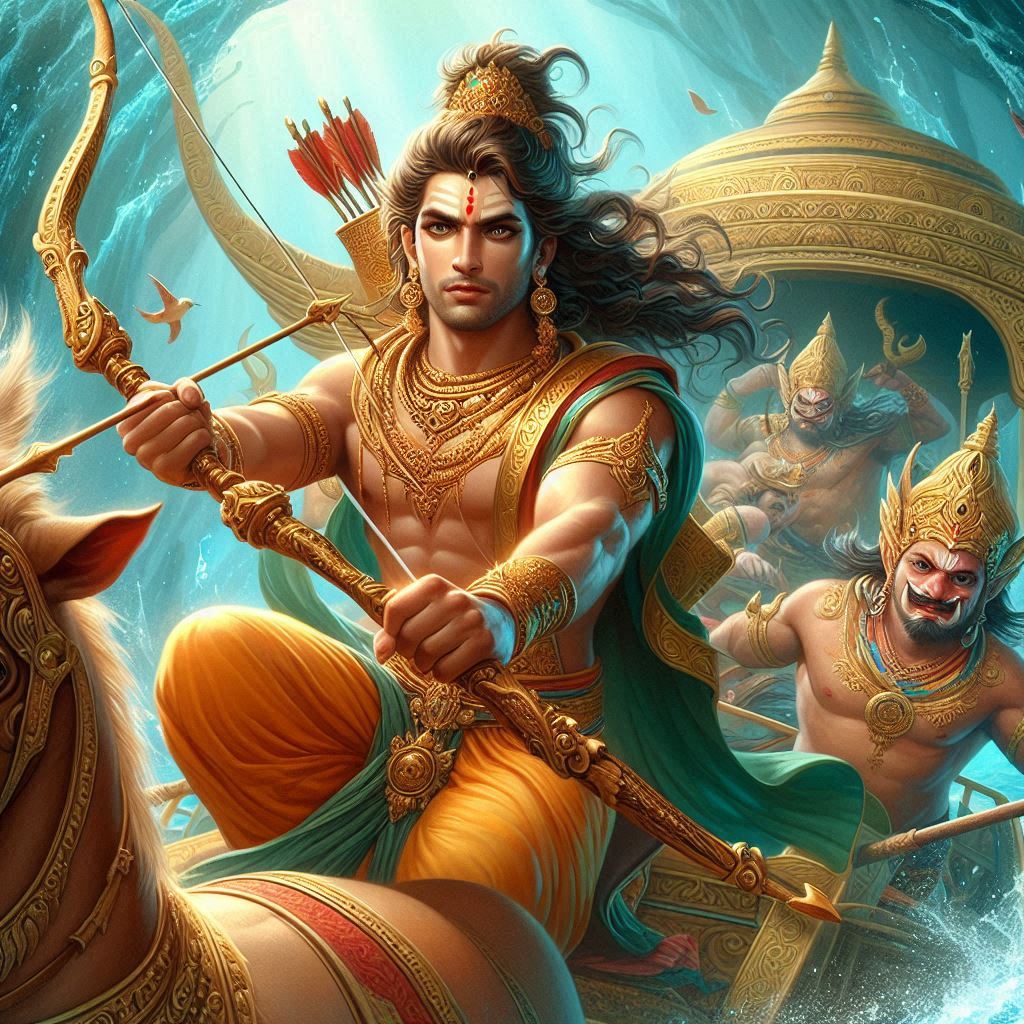
The Nivatakavachas were thirty million in number, powerful, skilled in magic, and looked alike. They had to be destroyed together and in the same location. Indra ordered his charioteer Matali to drive Arjuna to the place. Matali not only drove the chariot but also helped Arjuna with his expertise.
The chariot rode from the sky to underwater. Matali effortlessly steered the horses as Arjuna took in the sights. He saw colorful fish, tortoises, dolphins, whales, and other aquatic animals. They rode into the city of the danavas. The sound of the chariot alerted the danavas who rushed out and got ready to attack the intruder.
Arjuna blew his conch Devadatta, and the sound echoed in the city. The danavas were ready in their armor, holding their weapons like lances, clubs, spears, swords, etc., and threw them at him. Matali drove at such high speed that Arjuna couldn’t see things clearly. Everything appeared distorted. However, he regained his clarity and began the counter-attack of the danavas. A frightening war took place between them. As Arjuna took them out with his arrows, Matali trampled some of the Nivatakavachas under the chariot.
When Arjuna was gaining the upper hand, the danavas resorted to magic to confuse him. Large rocks began to fall on him from all sides. He continued to shatter the rocks but more fell. Then water hit him from different directions. Arjuna used celestial weapons like vishosana, salila, etc., to counter their magic. Then, suddenly, the entire region was plunged into darkness. Even Matali couldn’t see anything. He asked if Arjuna was safe and said he hadn’t seen such a horrific battle ever before and maybe this was meant to be.
Arjuna used another celestial missile to dispel the darkness around them. Still, the Nivatakavachas continued to deploy various magic tricks to stop Arjuna. However, he and the charioteer put up a tough fight and moved ahead. Arjuna killed more danavas. Then, they disappeared. Arjuna didn’t stop. He used divine arrows which hit the invisible danavas and killed them. Not knowing what else to do, the Nivatakavachas slunk back into their city. When Arjuna thought it was over, they rose high to tower over and attack him again.
Matali noticed Arjuna was hesitant and unsure. He encouraged the Pandava to use the vajra weapon. Arjuna invoked the vajra, which released countless vajras, one each at the remaining danavas, and killed all of them. The arrows hunted down the Nivatakavachas who tried to escape. At last, all of them fell dead.
Arjuna and Matali drove deeper into the city and ensured none of the danavas were left alive. They saw that the rakshasa women rushed into their houses. The city was so grand and majestic that Arjuna asked why the gods couldn’t live there. It was grander than heaven!
Matali replied that this was indeed the city of gods in the earlier days. The Nivatakavachas performed various austerities to gain boons and become powerful. They invaded the city, drove out the gods, and captured it as their own. The gods went elsewhere since they couldn’t defeat the Nivatakavachas. Arjuna had done it to give guru dakshina to Indra.
They returned to Indra’s sabha to update him about the good news. Indra was happy that his son and disciple proved himself worthy of the celestial weapons.

